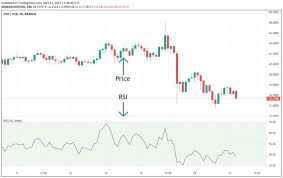Cryptocurrency markets are volatile, presenting both risks and opportunities for investors. A cryptocurrency investment analyst plays a crucial role in navigating these fluctuations, leveraging data-driven insights to make informed decisions. Among the various tools and methodologies available, technical analysis stands out as one of the most effective ways to predict market movements. This article explores the responsibilities of a cryptocurrency investment analyst and how they use technical analysis to enhance decision-making.
Understanding the Role of a Cryptocurrency Investment Analyst
A cryptocurrency investment analyst is responsible for assessing digital assets, identifying investment opportunities, and minimizing risks. Their work involves analyzing past price trends, market behavior, and trading volume to develop actionable strategies.
Unlike traditional financial analysts, cryptocurrency investment analysts must stay updated with the latest developments in blockchain technology, regulatory changes, and macroeconomic factors that influence the crypto market. They often work for investment firms, hedge funds, or as independent consultants advising retail and institutional investors.
The Importance of Technical Analysis in Crypto Investments
Technical analysis is an essential tool for cryptocurrency investment analysts. It involves examining historical price data, trading volume, and other market indicators to forecast future price movements. Since the crypto market operates 24/7, technical analysis helps traders make quick and informed decisions based on data rather than emotions.
While fundamental analysis considers the intrinsic value of an asset, technical analysis focuses solely on price action and market trends. This makes it especially valuable for short-term traders and investors looking for optimal entry and exit points.
Key Technical Analysis Tools Used by Crypto Analysts

To effectively predict price movements, cryptocurrency investment analysts rely on various technical analysis tools. Some of the most widely used include:
1. Moving Averages
Moving averages help smooth out price data to identify trends over time. The two most common types are:
- Simple Moving Average (SMA): The average of closing prices over a specific period.
- Exponential Moving Average (EMA): Gives more weight to recent prices, making it more responsive to recent market movements.
2. Relative Strength Index (RSI)
RSI measures the speed and change of price movements, indicating whether a cryptocurrency is overbought or oversold. When the RSI value is above 70, it suggests an overbought condition, while a value below 30 indicates an oversold market.
3. Bollinger Bands
Bollinger Bands consist of three lines—an SMA in the middle and two standard deviations above and below it. These bands expand and contract based on market volatility, helping analysts identify potential breakouts and price reversals.
4. Candlestick Patterns
Candlestick charts provide insights into market sentiment. Patterns like Doji, Hammer, and Engulfing formations help traders anticipate trend reversals or continuations.
5. Fibonacci Retracement
This tool helps identify potential support and resistance levels based on Fibonacci ratios. Analysts use it to determine potential reversal points in price movements.
How Technical Analysis Helps in Crypto Trading
The use of technical analysis helps cryptocurrency investment analysts in multiple ways:
Identifying Trends: By analyzing past price data, analysts can determine whether a cryptocurrency is in an uptrend, downtrend, or trading sideways.
Setting Stop-Loss and Take-Profit Levels: Technical indicators help set exit points to minimize losses and maximize profits.
Market Sentiment Analysis: Candlestick patterns and momentum indicators reveal investor psychology, helping analysts predict future price movements.
Enhancing Risk Management: Instead of relying on speculation, technical analysis allows analysts to make data-backed decisions, reducing the risk of significant financial losses.
Challenges Faced by Cryptocurrency Investment Analysts
While technical analysis is a powerful tool, it comes with its own set of challenges:
Market Manipulation: The cryptocurrency market is still relatively young, and price manipulation by large investors (whales) can lead to unexpected movements.
High Volatility: Crypto assets experience extreme price swings, making it difficult to rely solely on technical indicators.
Regulatory Uncertainty: Changes in government policies and regulations can impact the market unexpectedly.
False Signals: No technical analysis tool is 100% accurate; false breakouts and misleading trends can occur.
Combining Fundamental and Technical Analysis for Better Results
While technical analysis is essential, a well-rounded cryptocurrency investment analyst also incorporates fundamental analysis into their strategy. By analyzing blockchain project fundamentals, token utility, team credibility, and market demand, analysts gain a comprehensive understanding of an asset’s potential.
For example, if technical indicators suggest a bullish trend but the project’s fundamentals are weak, it might indicate a short-term price surge rather than long-term value. A balanced approach using both methodologies ensures a more informed investment decision.
Conclusion
A cryptocurrency investment analyst plays a critical role in the evolving digital asset space, helping investors navigate the complexities of the market. Technical analysis serves as an indispensable tool, enabling analysts to predict price movements, set risk parameters, and optimize trading strategies.
However, it is crucial to combine technical analysis with fundamental insights and market awareness to maximize investment success. As the cryptocurrency industry continues to grow, the demand for skilled investment analysts with expertise in technical analysis will only increase.


